10 Reasons Return of the King is an Easter Movie
Echoes of Easter in the final chapter of The Lord of the Rings
One of my first big articles here at Jokien with Tolkien was my “10 Reasons The Lord of the Rings is a Christmas Movie.” It’s still one of the most popular articles I’ve ever written and gets considerable traffic every year as the Christmas season approaches.
Read it here!
🎄 10 Reasons The Lord of the Rings is a Christmas Movie
Which Christmas movie is the best? Why The Lord of the Rings, of course.
But though I treated the trilogy as a unit in my argument and tried to use reasons from all three books/films in my post, I must admit that there’s a bit of a problem with the argument at its root.
You see, The Fellowship of the Ring is a Christmas movie. And The Two Towers is arguably one as well (Gandalf doesn’t get his white beard and famous steed that bears him around the world until then, after all).
But The Return of the King, considered by itself, is not a Christmas movie.
There’s virtually no snow, no giving of gifts by elves, it takes place in March, not December, and so on and so forth.
But if it isn’t a Christmas movie, is it anything in particular?
Yes, indeed it is. You see..
The Return of the King is an EASTER movie.
That’s right, The Return of the King joins Easter Parade, The Passion of the Christ, the forthcoming sequel to The Passion, Hop, Peter Rabbit, and Ben-Hur as a veritable Easter flick.
Not sure you believe me? Here’s my 10 Reasons The Return of the King is an Easter movie.
10 Reasons The Return of the King is an Easter Movie
1 - The Extended Edition DVD Release Has Easter Eggs
Ok, so we’re starting with a fun one, but did you know that The Return of the King Extended Edition had several Easter Eggs (in the sense of a “hidden surprise” for fans) when it was released on DVD?
The full version of the first Easter Egg is on YouTube (and begins with Elijah Wood literally saying “Welcome to the Easter Egg!”), and explains and sets up the clip below, but the short version is Dominic Monaghan pranked Elijah Wood with a fake interview via satellite (so Elijah couldn’t see Dom) where he pretended to be a German interviewer. Which led to this memorable exchange concerning the wearing of wigs:
In the second Easter Egg, Ben Stiller and Vince Vaughn ask Peter Jackson about making another Lord of the Rings movie in an unintentionally prescient sketch, considering The Hobbit trilogy was still years in the future at that point.
2 - Frodo and Sam going up Mount Doom parallels Jesus ascending Golgotha
Carrying a heavy burden and close to the end of their quest, our weary hero stumbles and is unable to rise. Suddenly, someone else steps in and helps carry their burden the rest of the way up the hill.
Quick: was I talking about Sam carrying Frodo up the slopes of Mount Doom or Simon of Cyrene helping Jesus carry his cross up Golgotha?
Alright, alright, so there are lots of differences too. But there’s no denying that the climax of the story of Frodo and the Ring and Jesus and the cross have some close parallels. Their journey up the hill at the end of their quest is one, while another is reason #3.
3 - Similar cries from Frodo and Jesus
In John 19:28, Jesus cries out “It is finished!” from the cross just before his death. Remind you of anything?
4 - The destruction of the Ring occurs on March 25th, a date traditionally associated with the Crucifixion
Ok, we’ve had a silly/superficial reason and then a few reasons that you might classify as loose parallels, but here in #4 we have a stronger and more explicit parallel.
According to Appendix B of The Lord of the Rings, the destruction of the Ring occurs on March 25th. What is the significance of this date, if any, for Tolkien?
Well there are several important connections with the traditional Church Calendar that March 25th most likely would have had for Tolkien, who was an observant Catholic.
March 25th is the date that the Feast of the Annunciation (celebrating the angel Gabriel visiting Mary) is celebrated in the Catholic Church, as well as the date that was traditionally considered to be the day of the creation of Adam, the passing of Israel through the Red Sea, and the immolation of Isaac. Busy (and significant) day!
But two more events were associated in antiquity with March 25th that have strong parallels with the destruction of the Ring and the Fall of Sauron: the Fall of Lucifer and the crucifixion of Christ!1
Now did Tolkien have all of these things in mind in fixing this date? Almost certainly not. But did he have at least the date of the Crucifixion consciously or unconsciously in his mind as he set the dates of the accomplishment of the quest to destroy the Ring?
Tolkien famously observed in Letter 142, “The Lord of the Rings is of course a fundamentally religious and Catholic work; unconsciously so at first, but consciously in the revision.”
And in the Reader’s Companion to The Lord of the Rings we find this quote from Tolkien: “Dec. 25 (setting out) and March 25 (accomplishment of quest) were intentionally chosen by me.”
So if we combine Tolkien’s conscious and intentional choice of March 25th as the date of the destruction of the Ring with his awareness of the date as one the Church celebrated Good Friday on in history, I think we can safely conclude that he intended there to be a correspondence between the two, an echo of the greatest of all eucatastrophes in the eucatastrophe of The Lord of the Rings (more on that in a bit).
5 - An Earthquake follows both the Crucifixion and the destruction of Ring
The Gospel of Matthew records in chapter 28 verse 51 that after Jesus breathed his last, there was an earthquake that shook the city. And what do we see occur after the Ring is destroyed in The Lord of the Rings? An earthquake! In the book, the shaking is felt by Faramir and Éowyn in Minas Tirith. In the film, the earthquake causes the ground under Sauron’s army at the Black Gate to collapse right from under them.
6 - The Dead leave their Tombs
Just one verse later in Matthew 28, the Gospel records that “tombs broke open. The bodies of many holy people who had died were raised to life. 53 They came out of the tombs after Jesus’ resurrection and went into the holy city and appeared to many people.”
Hmm, an “army” of the dead coming out of their tombs? Sound familiar?
7 - The Power of Evil Is Defeated
With the destruction of the One Ring, Sauron is defeated once and for all. The great Enemy is destroyed!
Likewise, Easter is a celebration of the triumph of God in Christ over the power of sin and death. Sin is defeated! Death no longer has the final word.
8 - The Reunions that follow the destruction of the Ring parallel those that follow the Resurrection
In both the book and the movie, the reunions that follow the destruction of the Ring remind one of the reunions of Jesus with his followers.
In the book, the scene that comes to mind is Sam encountering Gandalf the White for the first time.
As I wrote in a short Easter reflection in 2023,
After the One Ring is destroyed and the Eagles bear Frodo and Sam from the slopes of Mount Doom, Sam wakes and is greeted by Gandalf, whom he last saw plummeting to certain death into the depths of Khazad-dûm alongside the Balrog. But instead of the familiar Gandalf the Grey, he is greeted by Gandalf “robed in white, his beard now gleaming like pure snow in the twinkling of the leafy sunlight.”
Astonished and “between bewilderment and great joy,” he is struck speechless. But at last he gathers himself and says;
Gandalf! I thought you were dead! But then I thought I was dead myself. Is everything sad going to come untrue? What’s happened to the world?
Days after the destruction of the Ring, gardener Sam Gamgee encounters Gandalf, who he assumed was dead but is now risen and transformed, while in the Gospel of John chapter 20 Mary Magdalene encounters the risen and transformed Jesus, whom she mistakes for a gardener.
While Gandalf’s resurrection happens before the destruction of the Ring, Frodo and Sam first encounter him as Gandalf the White in The Return of the King. And Gandalf’s resurrection is clearly an echo of Jesus’—he dies so that others may live, in his death he defeats a great enemy (though unlike Jesus it is not the ultimate enemy of death itself), and he is sent back to continue his work in a new body that is like and yet unlike his previous one. So his encounter with his previous followers parallels Jesus’ encounters with his disciples.
This scene does not exist in the film, but Frodo’s reunion with Gandalf and the rest of the Fellowship contains much of the same sense of astonishment, disbelief, and joy.
9 - The titular Return of the King echoes the return of another King
[youth pastor voice] let me tell you about another King who Returned…
Gandalf and Frodo are not the only types of Christ to be found in The Return of the King. There of course is the King himself, heir to a throne long dormant who heals his people, rescues them by walking the Paths of the Dead, and who fulfills ancient prophecies in claiming his rightful throne.
10 - The Return of the King is the eucatastrophe of the War of the Ring (and the story of The Lord of the Rings). Easter is the eucatastrophe of the life of Christ, or Incarnation
As the concluding chapter of the saga, The Return of the King contains the climax of the entire story of The Lord of the Rings.
And this is not just any climax, but one of the great examples of Tolkien’s concept of ‘eucatastrophe.’
In his essay “On Fairy-Stories,” Tolkien defines ‘eucatastrophe’ as “the “joy of the happy ending” or “the sudden joyous ‘turn’” in a fairy-story.
The destruction of the Ring and the fall of Sauron is the eucatastrophe of The Lord of the Rings. All seemed lost: our heroes on the edge of defeat both in Mount Doom (Gollum holding the ring in triumph) and at the Black Gate (the Host of the West surrounded and hopelessly outnumbered) when mercy triumphs! Gollum falls into the fires of Mount Doom and the Ring is destroyed! The pity of Bilbo—and Frodo—have indeed ruled the fate of many.
And the joy we feel reading or watching this happy ending of The Return of the King, the tears, the relief, the catharsis, these are all echoes of a deeper and truer joy.
In the Epilogue of “On Fairy-Stories, Tolkien says this about the eucatastrophe in the life of Christ: “The birth of Christ is the eucatastrophe of Man’s history. The Resurrection is the eucatastrophe of the Incarnation.” According to Tolkien, Easter is the “sudden joyous turn” of Jesus’ life and of all history itself!
Read more of my thoughts on Easter and Eucatastrophe here:
For in The Return of the King, we find the echoes of Easter reverberating loudly and clearly for those with eyes to see and ears to hear.
Happy Easter to all you readers who will be celebrating this weekend. He is risen!
Do you agree with me? Anything I missed or failed to consider? Let me know in the comments!📚 You can read more of my writing by reading my books! My latest is a collection of essays on The Lord of the Rings, The Silmarillion, and more of Tolkien’s works (and their adaptations). You can also find it and more of my books on Amazon or Gumroad
⚔️ If someone forwarded this email to you or you found it through social media or Google, I’d like to invite you to join 12,000+ subscribers in the Jokien with Tolkien community: Subscribe here and get a free gift just for joining!
🏹 Chosen as a Substack Featured Publication in 2023
🪓 Official merch available in the Jokien with Tolkien store
❌ All typos are precisely as intended
🔗 Links may be affiliate, which is a free-to-you way to support this newsletter where I earn a small commission on items you purchase
🗃️ Can’t wait till next week for more content? View the archive
🎯 Interested in writing a guest piece? Check out my submission guidelines
🤝 Want to sponsor a future issue of Jokien with Tolkien? View my rates and packages
Catholic Encyclopedia (1913) “Feast of the Annunciation of the Blessed Virgin Mary” by Frederick George Holweck. Accessed via https://en.wikisource.org/wiki/Catholic_Encyclopedia_(1913)/Feast_of_the_Annunciation_of_the_Blessed_Virgin_Mary


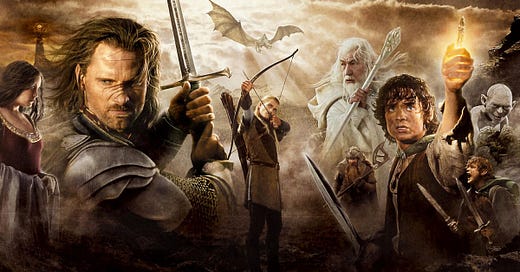




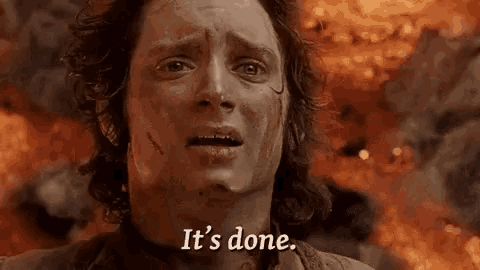
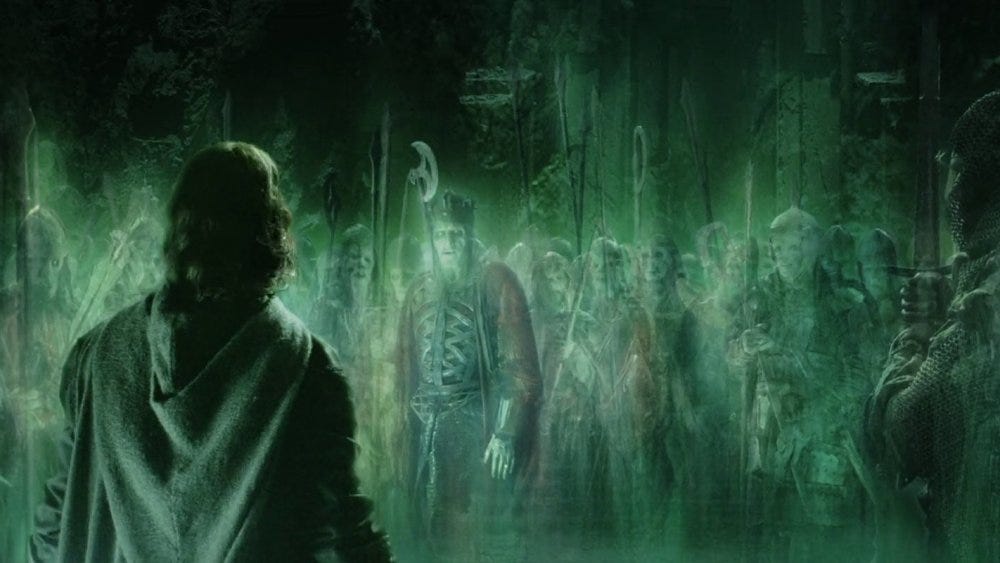

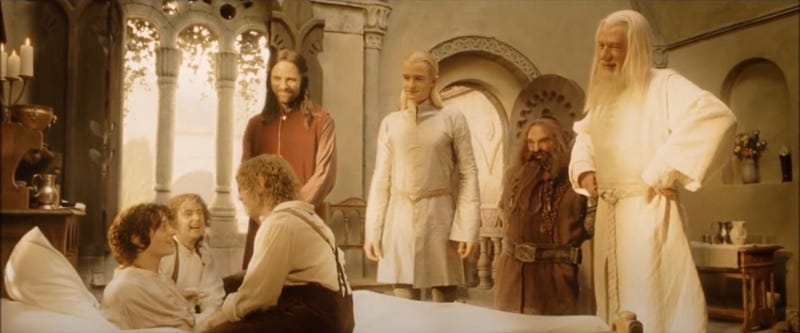
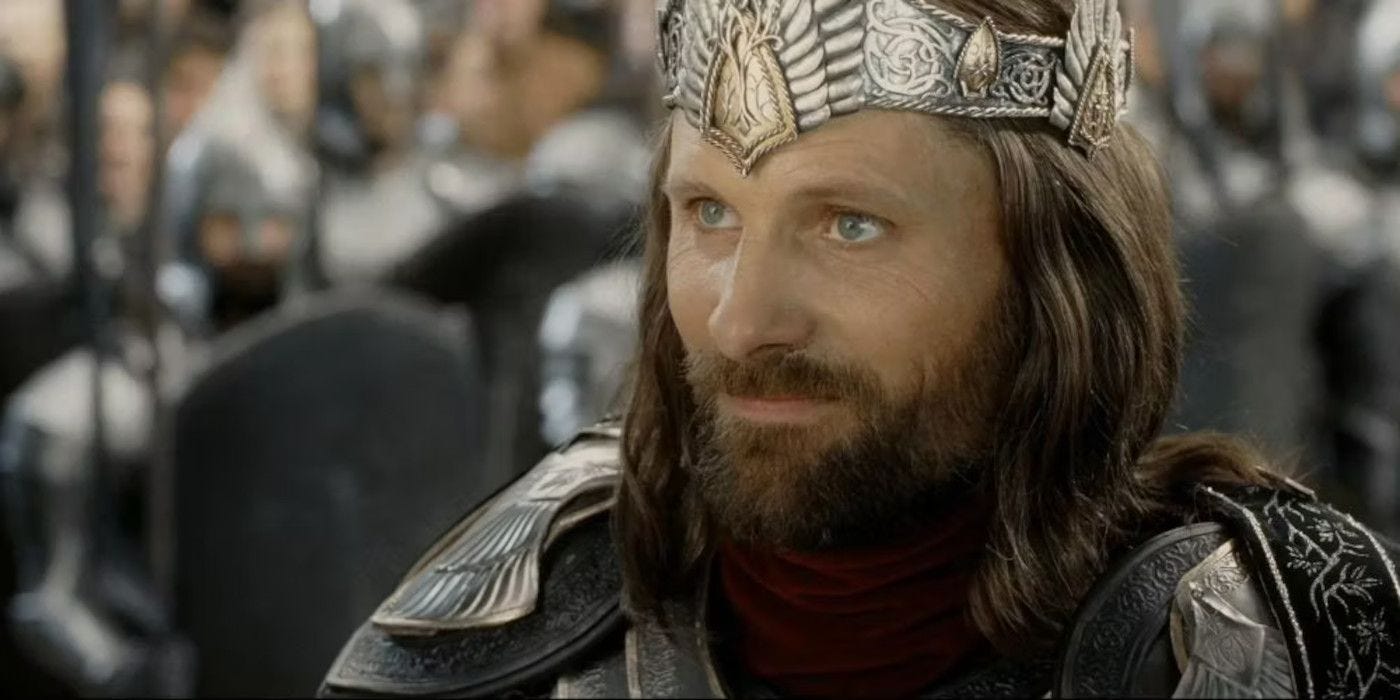
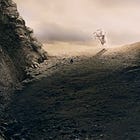

Another thought: Gandalf, Frodo and Sam all depart Middle Earth after completing their particular roles, much as Christ physically ascends after reassuring his followers and confirming their ongoing mission.
Beautiful piece! Thank you, and Happy Easter!
So no joke, I am beginning my Easter sermon with the final paragraphs from the Chapter: Mount Doom in RotK. I am speaking about how the story "continues" after evil is defeated. So often we end with happily ever after, but Tolkien writes 6 more chapters (in my paperback books—another almost 80 pages). Seems like there is menat to be life even when we think death ends the story...